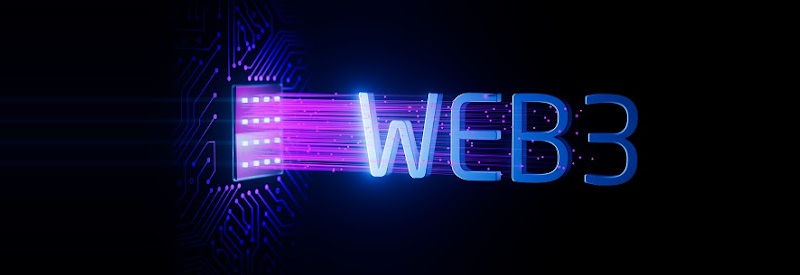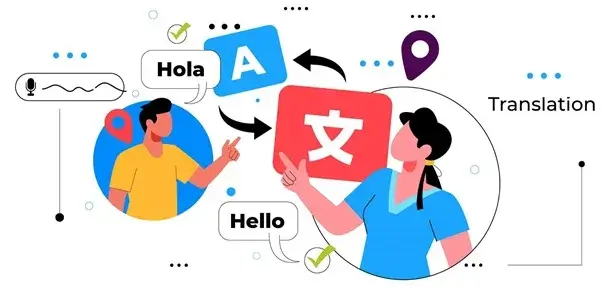Building A Secure and User-Friendly Web3 Wallet: Challenges and Best Practices
in Web Design on February 8, 2023
Web3 wallets play a crucial role in the decentralized ecosystem as they serve as the primary platform for users to store and manage their digital assets. With the rise of decentralized finance (DeFi) and non-fungible tokens (NFTs), the demand for web3 wallets has increased, leading to the development of various types of wallets with different features and functionalities. However, building a secure and user-friendly web3 wallet is not without its challenges. This article aims to provide an overview of the challenges and best practices for building a secure and user-friendly web3 wallet.
Understanding Web3 Wallets
Web3 wallets are digital wallets that use blockchain technology, smart contracts, and cryptographic algorithms to provide a secure and decentralized platform for users to transact and interact with the decentralized ecosystem. Unlike traditional centralized wallets, web3 wallets do not rely on a single entity to store and manage users’ assets. Instead, they use decentralized networks to provide a secure and transparent platform for users to transact and interact with the decentralized ecosystem.
There are various types of web3 wallets, including browser-based wallets, mobile wallets, hardware wallets, and desktop wallets. Each type of wallet has its own strengths and weaknesses and is designed to meet the specific needs of users. For example, browser-based wallets are easy to use and convenient, while hardware wallets provide the highest level of security.
Challenges in Web3 Wallet Development
Building a secure and user-friendly web3 wallet is not without its challenges. Some of the challenges faced by web3 wallet developers include:
- Security and Privacy Challenges: Web3 wallets store users’ digital assets and private keys, making them a prime target for hackers and cybercriminals. Ensuring the security and privacy of users’ assets is a critical challenge faced by web3 wallet developers.
- Interoperability Issues with Different Blockchain Networks: Web3 wallets need to interact with different blockchain networks and protocols to provide users with a seamless experience. Ensuring interoperability between different networks is a challenge faced by web3 wallet developers.
- Scalability and Speed Constraints: With the increasing popularity of web3 wallets, scalability, and speed are becoming critical issues. Web3 wallet developers need to ensure that the wallet can handle a large number of transactions and interactions without compromising security or user experience.
- User Experience Challenges: User experience is a critical factor in web3 wallet development. Web3 wallet developers need to ensure that the wallet is easy to use and understand, with a simple and intuitive user interface.
Best Practices for Building Secure Web3 Wallets
To overcome the challenges faced by web3 wallet developers and to build a secure and user-friendly web3 wallet, the following best practices should be considered:
- Secure Coding Practices: Web3 wallet developers should use secure coding practices and follow industry standards to ensure the security and privacy of users’ assets.
- Industry Standards for Security and Privacy: Adopting industry standards for security and privacy, such as secure encryption algorithms and secure storage mechanisms, is crucial in building a secure web3 wallet.
- User-Centered Design: Web3 wallet developers should focus on creating a user-centered design, taking into account the needs and preferences of users.
- Incorporating User Feedback: Web3 wallet developers should take into account user feedback and incorporate new features and functionalities based on user demand.
- Interoperability with Different Blockchain Networks: Interoperability with different blockchain networks is crucial for web3 wallet users who want to transact and interact with different decentralized platforms. Web3 wallet developers should ensure that their wallet is compatible with different blockchain networks and protocols.
- Scalability and Speed Optimization: As the popularity of web3 wallets grows, scalability and speed become critical issues. Web3 wallet developers should optimize their wallet for scalability and speed, ensuring that the wallet can handle a large number of transactions and interactions without compromising security or user experience.
- Regular Software Updates: Regular software updates are essential to keep web3 wallets secure and up-to-date with the latest security and privacy standards. Web3 wallet developers should ensure that they regularly update their wallet software to address security and privacy concerns.
- Integration with Decentralized Applications (dApps): Web3 wallets can provide users with access to a wide range of decentralized applications (dApps) that run on blockchain networks with solana rpc. Web3 wallet developers should ensure that their wallet is integrated with popular dApps and that users can access and use dApps directly from their wallet. Integration with dApps also enables users to transact and interact with dApps using their digital assets stored in their web3 wallet.
- Multisignature Support: Multisignature support is a security feature that requires multiple users to sign a transaction before it can be executed. This feature helps to prevent unauthorized transactions and provides users with an additional layer of security for their digital assets. Web3 wallet developers should ensure that their wallet supports multi-signature transactions and that users can easily set up and manage multi-signature transactions.
- User-friendly Interface: A user-friendly interface is essential for the success of web3 wallets. Web3 wallet developers should design their wallets with a user-centered approach, ensuring that users can easily understand and navigate the wallet and that the user interface is intuitive and accessible. A user-friendly interface also helps to encourage users to adopt and use web3 wallets, thereby promoting the growth and development of the decentralized ecosystem.
- Mobile Support: Mobile devices have become the primary devices used by many people to access the internet and perform online transactions. Web3 wallet developers should ensure that their wallet is available on mobile devices and that users can access and use their wallet from their mobile devices. Mobile support also helps to promote the widespread adoption and use of web3 wallets by providing users with access to their digital assets from anywhere and at any time.
- Customer Support: Good customer support is essential for the success of web3 wallets. Web3 wallet developers should provide users with adequate and accessible customer support, ensuring that users can easily and quickly get help when they need it. Customer support can take the form of email support, live chat support, or a knowledge base with frequently asked questions and answers.
- Continuous Improvement and User Feedback: Continuous improvement and incorporating user feedback are crucial for the success of web3 wallets. Web3 wallet developers should continuously monitor user feedback and incorporate user feedback into their wallet development processes. This helps to ensure that web3 wallets remain user-friendly and meet the changing needs of users as the decentralized ecosystem evolves.
Conclusion
Building a secure and user-friendly web3 wallet is a critical challenge faced by web3 wallet developers. By following best practices such as secure coding practices, industry standards for security and privacy, user-centered design, and incorporating user feedback, web3 wallet developers can overcome the challenges and provide users with a secure and user-friendly platform to store and manage their digital assets. As the demand for web3 wallets continues to grow, the development of secure and user-friendly wallets will become increasingly important to support the growth and development of the decentralized ecosystem.
In conclusion, the development of web3 wallets is an exciting and dynamic field that has the potential to revolutionize the way people manage and transact with their digital assets. Web3 wallet developers face numerous challenges, including security, privacy, and user experience. By following best practices and incorporating user feedback, web3 wallet developers can overcome these challenges and provide users with secure and user-friendly platforms to store and manage their digital assets. As the demand for web3 wallets continues to grow, the development of secure and user-friendly wallets will become increasingly important to support the growth and development of the decentralized ecosystem.








